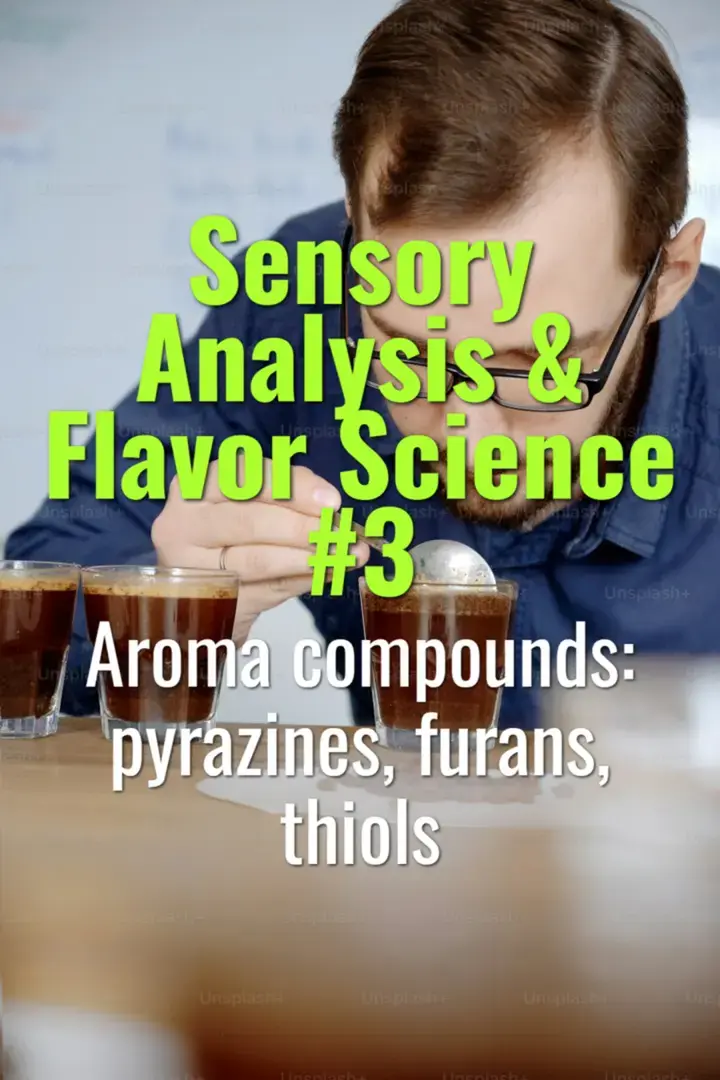Aroma compounds: pyrazines, furans, thiols
The roles of key aroma compound groups—pyrazines, furans, and thiols—in shaping coffee’s fragrance and flavor profile.
- Coffee Basics Nerds
- 1 min read
Article 3 of 12 in Sensory Analysis & Flavor Science/

Pyrazines
- Formation: Produced during Maillard reactions in roasting.
- Aroma Contribution: Nutty, roasted, earthy, cocoa-like notes.
- Examples: 2-methylpyrazine, 2,3-dimethylpyrazine.
- Impact: Give roasted coffee depth and complexity, especially in medium-to-dark roasts.
Furans
- Formation: Generated from carbohydrate and sugar degradation under heat.
- Aroma Contribution: Caramel, sweet, bready, maple-like notes.
- Examples: Furfuryl alcohol, furfural.
- Impact: Enhance sweetness perception and contribute to the “freshly baked” character of roasted coffee.
Thiols
- Formation: Created via sulfur-containing amino acid breakdown.
- Aroma Contribution: Intense, sometimes exotic fruity and floral notes.
- Examples: 2-furfurylthiol (coffee’s signature roasted aroma), 3-mercapto-3-methylbutyl formate (tropical, passionfruit-like).
- Impact: Powerful compounds at trace concentrations; define distinct flavor signatures in high-quality coffees.
Sensory Importance
- Pyrazines: Provide grounding, roasty backbone.
- Furans: Add caramelized sweetness and warmth.
- Thiols: Deliver bright, exotic top notes in specialty coffees.
Practical Insights
- Roast degree shifts compound balance:
- Lighter roasts → more thiols (floral/fruit).
- Medium roasts → balance of thiols + pyrazines.
- Dark roasts → dominance of pyrazines and furans.
- Origin and processing also influence precursor availability, shaping compound expression.
Summary
Pyrazines, furans, and thiols are central to coffee’s aromatic identity. Pyrazines add nutty, roasty depth; furans contribute caramelized sweetness; and thiols, though rare, deliver the tropical, floral highlights that make exceptional coffees stand out.